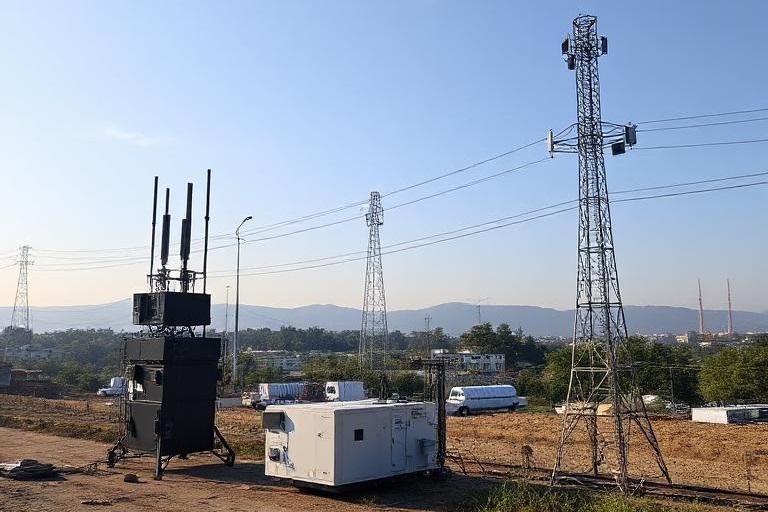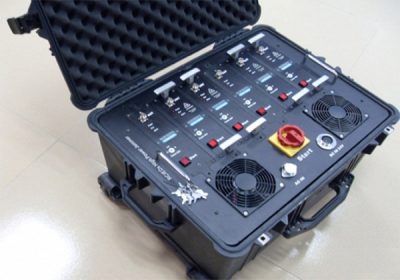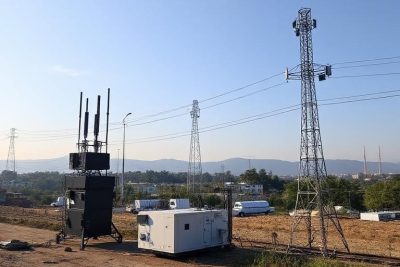In the field of modern electronic countermeasures and information security, noise jammers, as an important electronic device, are increasingly widely used. This article will comprehensively analyze the technical principles, classification characteristics and practical application scenarios of modern electronic jammer to help readers gain a deeper understanding of this mysterious and powerful electronic tool.
Basic working principle of jammers
A noise generator (Signal Jammer) is essentially an electronic countermeasure device that actively transmits radio signals. Its core function is to disrupt or block the normal signal transmission of the target device by emitting a specific form of electromagnetic waves. This interference is not a simple “signal shielding”, but an active electronic attack behavior.
The physical basis of the jammer’s operation is the superposition principle of electromagnetic waves. When the jamming signal and the target signal meet in space, the two waves will superimpose on each other. If the jamming signal is strong enough and well designed, it can completely “drown” the target signal, making it impossible for the receiving device to correctly decode the original information. This phenomenon is similar to trying to have a conversation in a noisy bar-when the background noise is large enough, normal conversation becomes impossible.
Three major technical classifications of jammers
1. broadband jammers – the “shotgun” of electronic countermeasures
Broadband jammers are the most well-known type. They can emit radio noise over a very wide frequency range, trying to “flood” the operating frequency of the target device. In other words, their strategy is “better to kill a thousand by mistake than to let one go.”
Principles and characteristics
This type of device usually includes one or more mixed noise generators, and the output signal is transmitted to the antenna through a high-power broadband transmitter, and then radiated in all directions. Its main advantage is wide coverage and no need to know the exact frequency used by the target device in advance.
However, broadband jammers also have obvious disadvantages:
- Severe power dispersion: because the energy is “smeared” on a wide frequency band, the energy density at a single frequency point is extremely low.
- Limited interference range: short effective distance, high power is required to ensure the interference effect.
- Large side effects: it is easy to cause large-scale interference to surrounding legal wireless devices.
Figuratively speaking, using a broadband jammer is like using a high-pressure water gun to flush a forest. The target may be hit, but the waste is amazing.
Subtype expansion
In order to improve efficiency, some broadband jammers are specially designed to only interfere with certain frequency bands, such as the VHF (very high frequency, about 70-110MHz) band. This method adds a bandpass filter and only emits noise in the key frequency band, which not only improves energy utilization but also reduces interference with irrelevant frequencies.
There is also a more advanced method: frequency hopping narrowband jammer. It quickly changes different frequency points every second to emit high-energy pulses, which can not only cover a certain frequency band but also ensure instantaneous power density. For example, a narrowband frequency hopping jammer with a power of only 0.01W can outperform a 20W traditional broadband jammer at a specific frequency!
2. narrowband jammer – precision-guided “electronic sniper rifle”
Unlike the “wide net” of broadband jammers, narrowband jammers are typical “precision strike” types. They usually target one or several known frequencies for strong interference.
Principles and characteristics
Narrowband jammers only work in a very small spectrum range, with concentrated energy and signal strength far exceeding broadband jammers. Therefore, as long as the frequency at which the target device works is known, the narrowband jammer can achieve a very high interference effect with very low power.
The characteristics are summarized as follows:
- Concentrated energy, strong interference
- Small side effects, limited impact on the surrounding
- Need to know the target frequency, limited applicability
In addition, the narrowband jammer can also modulate the signal according to the characteristics of the target signal, create interference waves similar to the target signal (such as frequency comb interference), greatly improving the interference effect. Even if the power is not large, it can distort the TV picture and make noise in the wireless audio device, achieving the purpose of disrupting communication.
Of course, when facing multi-frequency hopping communication equipment (such as modern mobile phones), narrowband jammers require complex multi-frequency design, and the circuit is more sophisticated than broadband jammers.
3. electromagnetic jammers – “directional weapons” for special equipment
The last and less common type is low-frequency electromagnetic jammers, or magnetic field jammers. They do not directly interfere with radio frequencies, but destroy the physical working state of the equipment by emitting strong magnetic fields in the low frequency band of 10Hz to 1000Hz.
Principle and characteristics
This jammer usually consists of a high-power low-frequency signal source plus a coil antenna, which can have a destructive effect on the following devices:
- Speaker: creates continuous noise or howling
- Microphone: introduces low-frequency clutter to destroy recording
- CRT: causes severe image distortion or color cast
Since low-frequency magnetic fields can penetrate walls and ceilings, it is relatively concealed to use. However, this technology is basically ineffective for modern flat-panel displays and LCD screens, so it is gradually marginalized. However, when targeting audio equipment, it is still one of the effective means of destruction.
Summary
As an important tool for information protection, radio jammers have many types and application scenarios:
Comparison chart of different types of radio jammers
| Feature / Type | Wideband Jammer | Narrowband Jammer | Low-Frequency Electromagnetic Jammer |
|---|---|---|---|
| Interference Frequency Range | Very broad (tens of MHz to several GHz) | Very narrow (single frequency or small band) | Low frequency (10Hz–1000Hz) |
| Energy Efficiency | Very low (spread out) | Very high (focused) | Low (but effective on specific devices) |
| Interference Intensity | Moderate (requires high power) | Very strong (even with low power) | Low to moderate (depends on device) |
| Impact on Surrounding Devices | High (affects radio, mobile, WiFi, etc.) | Low (targets specific frequencies) | Very low (mainly affects speakers/CRT screens) |
| Best Use Case | Unknown frequencies, emergency shielding | Precise protection, targeted attacks | Disabling microphones, old speakers/TVs |
| Advantages | Flexible use, quick response | Precise jamming, energy efficient | Strong penetration, highly covert |
| Disadvantages | Power waste, large side effects | Requires knowledge of target frequency, more complex design | Limited compatibility, needs high power |
| Typical Applications | Preventing wireless eavesdropping, emergency communication blackout | Securing meetings, anti-surveillance | Jamming bugs, disrupting CRT monitors |
Choosing the right jammer for different needs can not only improve the protection efficiency, but also minimize the impact on irrelevant equipment. In actual applications, it is usually used in combination according to the on-site environment, target type and protection needs, and even combined with multiple interference methods to form a multi-level radio protection network.



